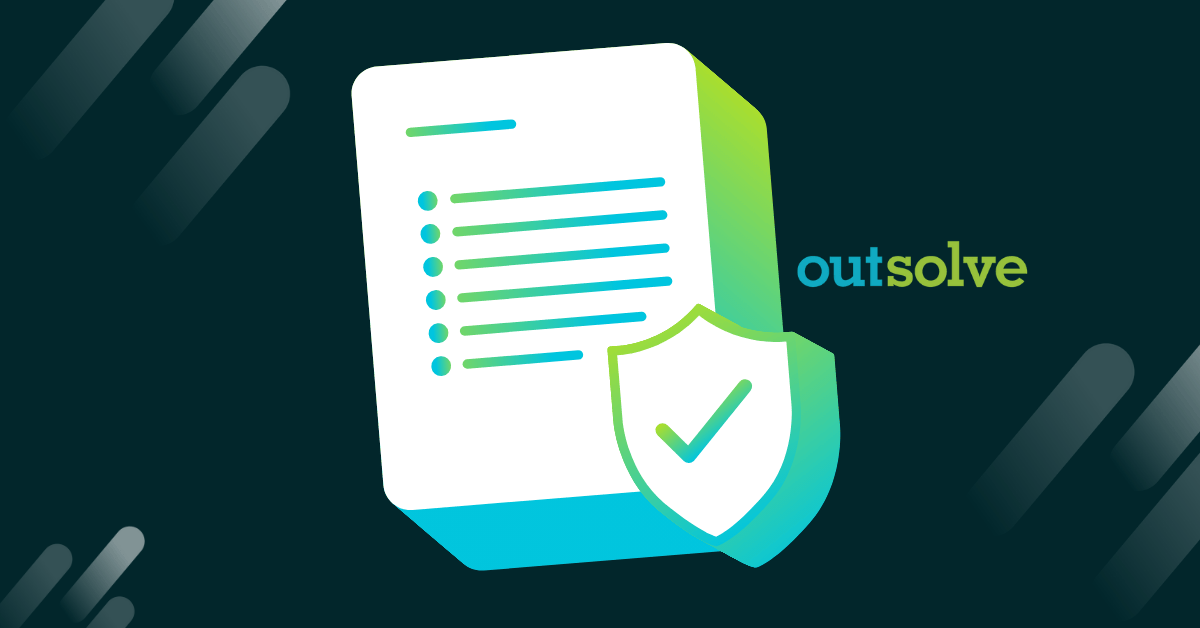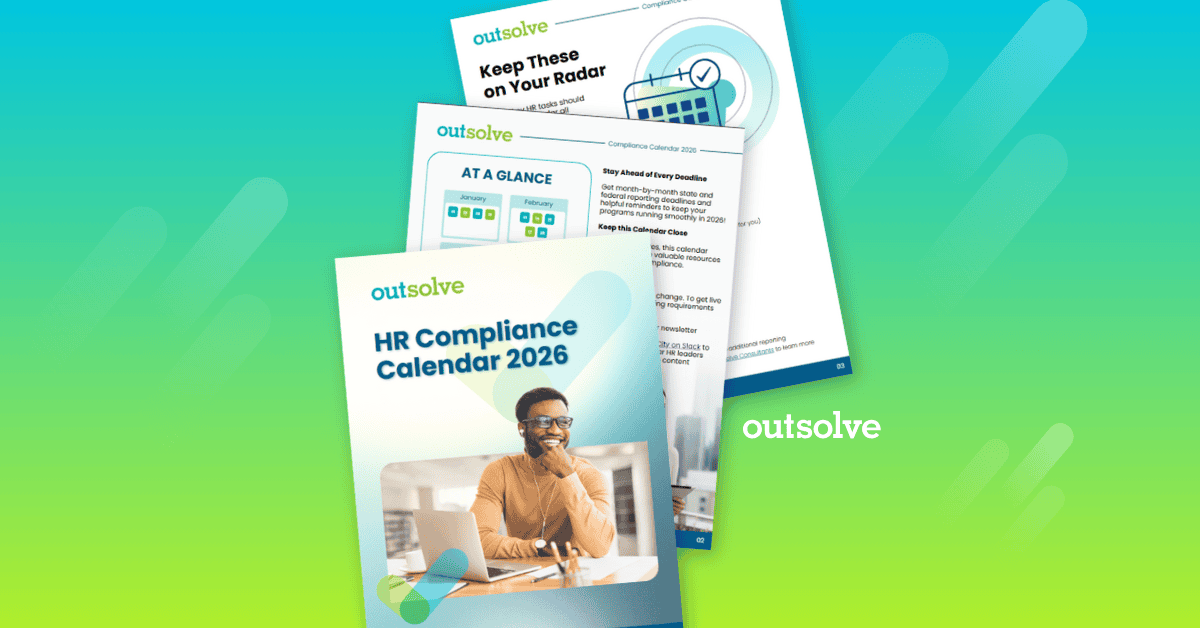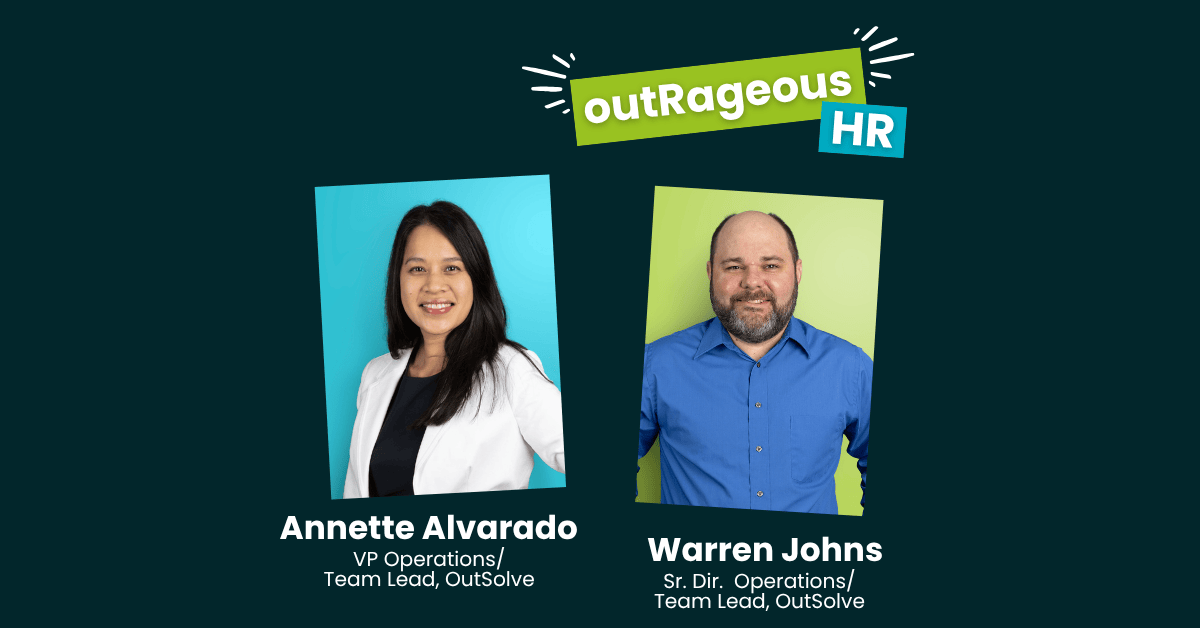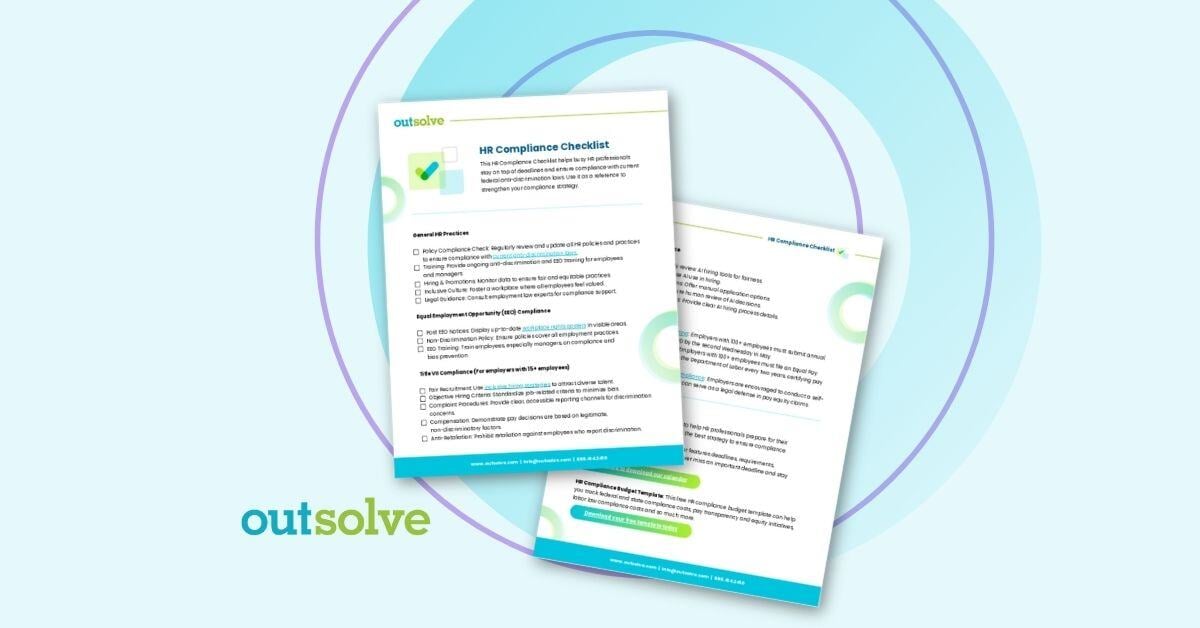4 min read
Legal Series: Part 1: I-9 Enforcement Heats Up: Key Risks and Realities for Employers in 2025
![]() OutSolve
:
Aug 6, 2025 12:55:32 PM
OutSolve
:
Aug 6, 2025 12:55:32 PM

This article is part of an ongoing legal series designed to provide insight and practical guidance on current and emerging workplace compliance issues. These insights shared by lawyers are based on their interpretation of existing regulations and proposed changes, and intended for informational purposes, not to be regarded as legal advice.
By law, U.S. employers cannot employ noncitizens without U.S. work authorization. To verify a worker’s immigration status and work authorization, employers use Form I-9, Employment Eligibility Verification. The executive branch, led by the president, has a uniquely powerful role in setting immigration priorities. One of the Trump administration’s priorities is locating and penalizing employers who hire unauthorized workers.
Employers who understand the reality of how the system works, including what the executive branch can and cannot do, can minimize the risk of disruptions to business operations related to I-9 enforcement. Outsolve offers resources to help employers understand their I-9 obligations, perform internal audits, and prepare for increased enforcement. We now also offer a comprehensive I-9 management solution designed to streamline compliance and reduce risk.
The Realities of Immigration Enforcement
In 2025, the executive branch of the U.S. government plays a particularly all-encompassing role in the U.S. immigration system. Understanding how and why can help employers anticipate changes, distinguish between law and policy, and make informed decisions.
Separation of Powers
The U.S. Constitution establishes the three branches of the U.S. government:
- Article I—The legislative branch is responsible for creating laws;
- Article II—The executive branch is responsible for enforcing laws; and
- Article III—The judicial branch is responsible for interpreting laws.
If one branch tries to exercise the powers of another, it violates the constitutional doctrine of separation of powers.
This structure positions the legislative branch as the most powerful branch of the U.S. government. Yet, over time, Congress has become less and less effective at passing laws, leading to stagnation in many key areas, especially immigration law.
Legislatively Passed U.S. Immigration Law
The primary U.S. immigration law is the Immigration and Nationality Act (INA), passed in 1952 and amended a handful of times. The most significant amendments occurred in:
- 1965 - family sponsorship green card system,
- 1976 - employment preference green card system,
- 1986 - sanctions for employers who hire unauthorized workers, and
- 1996 - modern removal (deportation) process.
Since 1996, when the internet was new, Congress has not substantively amended the INA.
Executive Orders and Policy Statements
The Trump administration issued a January 2025 executive order directing agencies to increase immigration enforcement, including I-9 enforcement, and make enforcement quicker and easier for the government. Executive orders have limited power. If they overreach into the legislature’s territory, they violate the U.S. Constitution. Still, executive agencies take orders from the president and may enact regulations related to executive orders and policy statements.
Agency heads and the Attorney General, who leads the DOJ, sometimes publish press releases and similar documents establishing policy and enforcement priorities. Like executive orders, these documents cannot change the law, but they may influence decision-making at the individual level, such as instructing ICE officers which industries to target for I-9 enforcement.
Executive Agencies
Executive agencies complete the on-the-ground immigration enforcement work. The Department of Homeland Security (DHS) oversees the core immigration agencies, including:
- U.S. Citizenship and Immigration Services (USCIS),
- U.S. Customs and Border Protection (CBP), and
- U.S. Immigration and Customs Enforcement (ICE).
ICE primarily handles I-9 enforcement, but some Department of Justice (DOJ) personnel and personnel from other DHS offices also have the authority to conduct audits.
The Code of Federal Regulations (CFR)
Executive agencies are still responsible for enforcing outdated laws. To account for on-the-ground realities, agencies create regulations through the Code of Federal Regulations (CFR). These regulations must be consistent with laws passed by the legislature.
To change the CFR, the agency must:
- Propose a new rule,
- Publish the proposal in the Federal Register, and
- Accept comments during a public comment period.
During the public comment period, anyone may express their opinions via the Federal Register website. After the comment period ends, the agency may finalize the regulation by publishing it in the CFR.
Legal Challenges
Advocacy and political groups often challenge CFR regulations that gain a lot of attention by finding individuals impacted by the regulations to serve as plaintiffs. Often, these groups claim the regulations represent executive overreach into the legislative branch. These groups choose to bring the cases to specific judges, who they know will agree with their position.
Understanding Form I-9, Employment Eligibility Verification
Published by USCIS, Form I-9, Employment Eligibility Verification, is designed to enable employers to verify that their hires have work authorization. USCIS sometimes publishes updated forms, and it’s essential to use the most current version when hiring someone.
How To Fill Out an I-9 Form
To complete an I-9, employees provide identification documents that prove they have work authorization, which the employer verifies. USCIS publishes detailed instructions explaining how to fill out an I-9 Form.
I-9 Verification
Employers may verify eligibility in several ways, including using the federal E-Verify system or an authorized representative. At present, verification through the E-Verify system is generally voluntary at the federal level for most private employers.. However, the Trump administration may seek to make it mandatory. To do so, the CFR rulemaking process will likely need to be completed.
Understanding the Risks: What I-9 Enforcement Looks Like
Typically, the government enforces I-9 requirements through audits. In more dramatic cases, it may also conduct workplace raids.
I-9 Audits and I-9 Penalties
Executive agencies conduct I-9 audits by:
- Serving a Notice of Inspection (NOI) on the employer through certified mail or in-person delivery, identifying what documents and information it needs;
- Giving the employer a minimum of three days to gather requested documents;
- Reviewing the documents to determine whether the employer has complied with the law; and
- Notifying the employer of its findings.
If the agency concludes you’re not in I-9 compliance, it may allow you ten days to come into compliance, or it may choose not to impose penalties on the expectation that you’ll come into compliance in the near future.
Otherwise, the agency may impose I-9 penalties, which vary based on how and why the employer violated the law. If the employer routinely or knowingly hires unauthorized workers, these penalties may include criminal prosecution. Most penalties, however, are monetary fines calculated per unauthorized worker.
Workplace Raids
Workplace raids or targeted enforcement activities involve executive agency officers conducting searches at business locations. They’re controversial and can have dramatic consequences that impact local economies for years.
Unlike I-9 audits, the government must get a warrant from a judge to conduct a raid. For a judge to sign off, the agency must show probable cause that it will discover evidence of illegal activity on the premises. In this context, having probable cause means the agency has evidence making it reasonable to assume the employer has hired unauthorized workers.
When they come to the workplace, law enforcement must have a copy of the warrant. It must detail where and what officers are authorized to search or seize.
Preparing for Increased I-9 Enforcement
With so much at stake and an unstable and stagnating regulatory system, employers should take increased enforcement seriously. Outsolve can help you adapt to the realities of the I-9 system and minimize the risks that increased enforcement will harm your business. Learn more about our I-9 Employment Verification System.
Founded in 1998, OutSolve has evolved into a premier compliance-driven HR advisory firm, leveraging deep expertise to simplify complex regulatory landscapes for businesses of all sizes. With a comprehensive suite of solutions encompassing HR compliance, workforce analytics, and risk mitigation consulting, OutSolve empowers organizations to navigate the intricate world of employment regulations with confidence.
Weekly OutLook
Featured Posts

New Year, New Deadlines: 2026 HR Compliance Calendar

outRageous HR: Plan Now or Pay Later
Related Posts

Refreshing Your I-9 Tools and Process to Stay Compliant
Form I-9 is a federal requirement that carries real consequences if handled improperly. With increased scrutiny on immigration by the current...
.png)
New Year, New Risk: Why Federal Contractors Can’t Hit Snooze
Lean in to disciplined, data‑driven compliance

An HR Year in Review: Key Updates in 2025
The unpredictability of 2025 has been an uphill trek for HR teams across the U.S. This year brought substantive employment compliance changes to...
